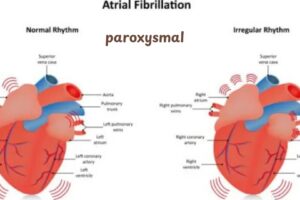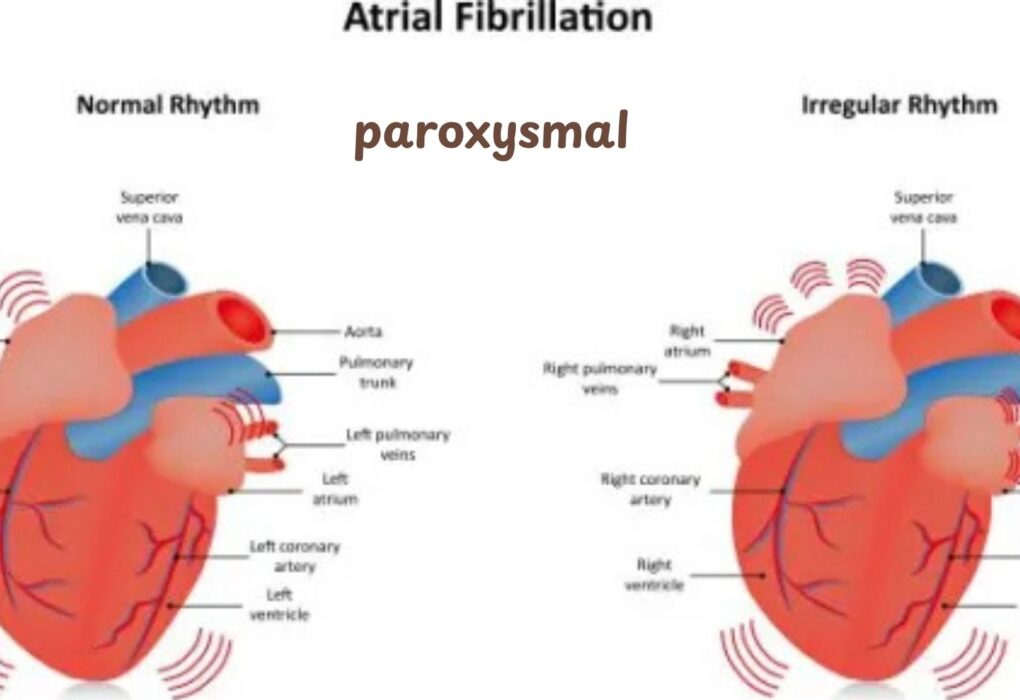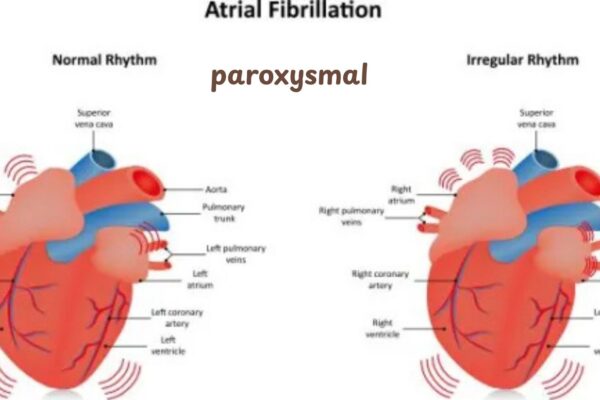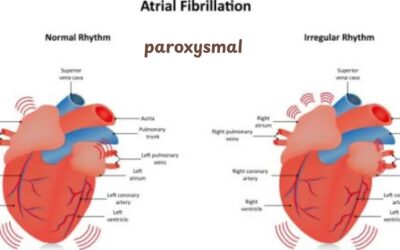The word paroxysmal may seem intimidating, but all it really means is sudden, surprising spells of symptoms that come and go rapidly. Unlike other chronic conditions that stick around for the long term, paroxysmal conditions hit you out of the blue and can take you by surprise. Think about how not-sick you are all of a sudden, and then how it feels to cough and seize and have your heart race. The dothica coxae. That is the kind of instability that people find absolutely unique and terrifying in those conditions.
In medicine, it’s important to know about paroxysmal events because they can be symptoms of yet other health problems. Atrial fib, migraines, seizures, or Sudden shortness of breath all belong to this group. Understanding when these episodes tend to occur could help patients and doctors design improved care strategies.
In this article, we’ll define what paroxysmal means, detail the most common conditions associated with it, examine symptoms, causes, diagnosis, and treatment, and provide tips for prevention and how to self-care. At the finish, you will be educated what can treat paroxysmal affairs and when to consult a doctor.
What Does Paroxysmal Mean?

The term paroxysmal is derived from the Greek paroxysmos — “a sudden attack or outburst.” In medicine, it means a health episode that strikes hard and fast and leaves in the same manner.
To get a better sense of what this means, it’s helpful to compare it to some related words in medical Terms:
| Term |
Meaning |
Example |
| Paroxysmal |
Sudden onset, short-lived, episodic |
Sudden coughing fit |
| Chronic |
Long-lasting, persistent |
Chronic asthma |
| Acute |
Sudden onset, continuous until treated |
Acute bronchitis |
| Recurrent |
Symptoms that return over time |
Recurrent migraines |
For instance, someone with paroxysmal atrial fibrillation might have a normal heartbeat most of the time, but suddenly, the rhythm of their heart changes for a few hours and then goes back to normal. And it is this “on-and-off” pattern that is the very definition of paroxysmal.
Common Paroxysmal Conditions
Paroxysmal phenomena are present in various medical subjects. The most frequent diseases are:
Paroxysmal Atrial Fibrillation
Paroxysmal Nocturnal Dyspnea
Paroxysmal Migraines and Headaches
Paroxysmal Seizures (Epilepsy)
Paroxysmal Cough and Asthma Attacks
Other Rare Disorders
Grouping these conditions together can help doctors find treatment plans that are unique to each patient.
What Symptoms Are Associated with Paroxysmal Episodes?
All of the paroxysmal symptoms have one thing in common — they suddenly come and tend to be either severe and short-lived or very severe and long-lasting.
General Characteristics
- Sudden onset
- Severe intensity
- Short duration
- Repetitive pattern
Symptom Breakdown by System
- Cardiovascular: Palpitations, arrhythmias, and chest pain.
- Neurological: Seizures, dizziness, muscle spasms.
- Respiratory: Coughing fits, sudden breathlessness.
- Pain-related: Intense headaches or migraines.
Stress, lack of sleep, allergens, caffeine, alcohol, strong emotions may trigger the attack.
| Condition |
Key Symptom |
Duration |
Trigger Example |
| Atrial Fibrillation |
Irregular heartbeat |
Minutes–hours |
Stress, alcohol |
| Migraine |
Severe headache |
Hours–days |
Lack of sleep |
| Seizures |
Jerky movements |
Seconds–minutes |
Flashing lights |
| Cough |
Coughing fit |
Minutes |
Dust, allergens |
What Causes Paroxysmal Conditions?
The etiologies can be classified as follows:
- Neurological: Disruption of brain function (such as seizures).
- Cardiac: Heart rhythm problems such as atrial fibrillation.
- Respiratory: Spasms of the airways or fluid in the lungs.
- Lifestyle and Environmental Triggers: Stress, smoking, bad day, allergens.
- Genetics: A few conditions, such as epilepsy, tend to occur in families.
Example: Someone with paroxysmal atrial fibrillation might have an attack after drinking decaffeinated coffee or alcohol, and an asthmatic patient could develop night coughing if the bedroom is dusty.
How Are Paroxysmal Conditions Diagnosed?
Diagnosis typically requires a history of the patient, a physical examination, and some medical tests.
- ECG/EKG: Detects irregular heart rhythms.
- EEG: Watches the brain for signs of seizures.
- Spirometry: It tests the flow of air and lung capacities.
- MRI/CT testing: Aids detection of structural or neurological problems.
A symptom diary is often advised, so doctors can search for patterns in episodes and potential triggers.
Treatment Options for Paroxysmal Conditions
Treatment depends on the condition type, severity, and frequency.
Medication-Based Care
- Antiarrhythmic drugs for atrial fibrillation.
- Asthma and coughing fit inhalers.
- Anti-seizure medications.
- Migraine medications.
Lifestyle Management
- Healthy diet and exercise.
- Limiting caffeine and alcohol.
- Practicing good sleep hygiene.
- Stress management.
Medical Procedures
- Catheter ablation for atrial fibrillation.
- Surgery for rare, severe cases.
Reminder: Never start or stop a medication without consulting a doctor.
Self-Care and Prevention Strategies
- Elimination of known triggers (smoke, allergens, alcohol).
- Doing breathing exercises to assist with breathing disorders.
- Reduction of stress through yoga, meditation, or relaxation.
- Attending regular health check-ups.
- Keeping a symptom log for improved self-overview.
Don’t forget: Never brush off sudden or severe paroxysmal episodes. Seek immediate medical help.
Living With Paroxysmal Conditions
It can be hard to live with randomness. The patients may be anxious since they cannot predict when the next episode will occur.
Coping Strategies
- Education about the condition.
- Creating a plan of treatment with a clinician.
- Having emergency contacts ready.
Family and Caregiver Support
Caregivers should be able to handle episodes of illness, particularly those involving seizures or changes in heart rhythm.
Mental Health
Therapy, counseling and support groups can help cope with stress and anxiety.
For instance, a migraine patient who monitored triggers and made dietary changes saw episodes decrease by 50%.
When to Seek Emergency Medical Help
Not all episodes are life-threatening, but some necessitate immediate care.
- Pain in the chest or a prolonged abnormal heartbeat.
- Seizures that last for more than a minute.
- Severe shortness of breath.
- Loss of consciousness.
Families and caregivers need to be educated to avoid unnecessary delays in the provision of assistance when it is required.
Conclusion
Paroxysmal conditions sound complex, but the idea is simple: abrupt, brief episodes of ill health that take you unawares. And although they tend to go away easily, they frequently signal broader health problems. Patients may be more proactive by learning the implications, etiology, clinical presentation, diagnosis, and treatment. The best risk-reducing treatment and the chance to improve your quality of life is using medical treatment and making changes in your day-to-day life to co-manage your condition.
FAQ’s
1. What are the differences between paroxysmal versus acute symptoms?
Paroxysmal symptoms are also sudden, but are episodic, whereas acute symptoms start suddenly and do not change unless treated.
2. Are paroxysmal disorders able to be fully cured?
Some can be controlled, even cured (e.g., by an operation for some arrhythmias), while others rely on long-term management.
3. What are some of the common paroxysmal conditions?
Atrial flutter, seizure disorder, migraine headaches, asthma attacks, and paroxysmal nocturnal dyspnea.
4. What is the best way to control paroxysmal episodes in a natural way?
Austere triggers, a healthy lifestyle, low tension, and symptom diary may be also helpful.
5. Is paroxysmal atrial fibrillation life-threatening?
It can heighten the risk of stroke or heart failure if not treated appropriately, so managing it is crucial.






















